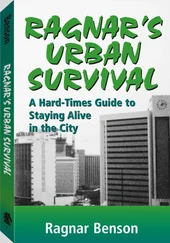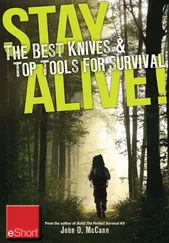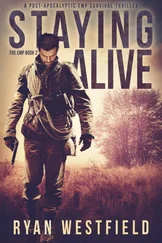Ragnar Benson - Ragnar's Urban Survival - A Hard-Times Guide to Staying Alive in the City
Здесь есть возможность читать онлайн «Ragnar Benson - Ragnar's Urban Survival - A Hard-Times Guide to Staying Alive in the City» весь текст электронной книги совершенно бесплатно (целиком полную версию без сокращений). В некоторых случаях можно слушать аудио, скачать через торрент в формате fb2 и присутствует краткое содержание. Год выпуска: 2009, ISBN: 2009, Жанр: Старинная литература, на английском языке. Описание произведения, (предисловие) а так же отзывы посетителей доступны на портале библиотеки ЛибКат.
- Название:Ragnar's Urban Survival: A Hard-Times Guide to Staying Alive in the City
- Автор:
- Жанр:
- Год:2009
- ISBN:1581600593
- Рейтинг книги:5 / 5. Голосов: 1
-
Избранное:Добавить в избранное
- Отзывы:
-
Ваша оценка:
- 100
- 1
- 2
- 3
- 4
- 5
Ragnar's Urban Survival: A Hard-Times Guide to Staying Alive in the City: краткое содержание, описание и аннотация
Предлагаем к чтению аннотацию, описание, краткое содержание или предисловие (зависит от того, что написал сам автор книги «Ragnar's Urban Survival: A Hard-Times Guide to Staying Alive in the City»). Если вы не нашли необходимую информацию о книге — напишите в комментариях, мы постараемся отыскать её.
Ragnar's Urban Survival: A Hard-Times Guide to Staying Alive in the City — читать онлайн бесплатно полную книгу (весь текст) целиком
Ниже представлен текст книги, разбитый по страницам. Система сохранения места последней прочитанной страницы, позволяет с удобством читать онлайн бесплатно книгу «Ragnar's Urban Survival: A Hard-Times Guide to Staying Alive in the City», без необходимости каждый раз заново искать на чём Вы остановились. Поставьте закладку, и сможете в любой момент перейти на страницу, на которой закончили чтение.
Интервал:
Закладка:
Personal responsibility and self-reliance require great attention to detail. An unlicensed private nursery in Salem, Oregon, for example, was discovered and summarily shuttered when authorities were tipped off to its existence by the quantity of disposable diapers found in their trash. This is not city survival, but a down-home example of the length to which bureaucrats will go to maintain their control.
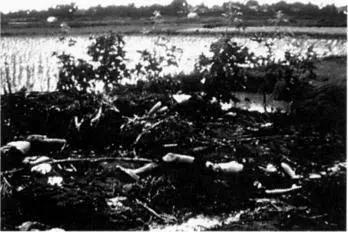
Citizens squashed by enemy armor at a watering area.
My list of vital services that may be controlled by the government and for which city survivors should make other arrangements includes the following:
• Sewage systems
• Garbage collection and disposal
• Communications including radio, television, phone, mail, and Internet access
• Fuel
• Medical services
• Utilities such as gas and electric power
• Transportation
• Water
• Food
• Self-defense/security
0 Shelter
Of these, only food, water, shelter, and self-defense are definitely on the list of must-haves needed to survive. Others may also be there, depending on one's personal circumstance. My advice is to never, never rely on people who don't give a damn-such as government officials-for something really important.
Chapter 4

Water
"Successful city survivors will have to drink lots of brown and green water."
After hearing this a second and third time from survivors of Berlin and Beirut, it was obvious that this was going to be a very nasty chapter.
It's akin to the social structure in socialistic economies. Everyone is equal, but some comrades are more equal than all the others. Supplies of water are like that! All absolute elements of survival will lead to death when denied, but depending on weather, workload, and physical condition of the survivor, water is the most immediate. Without it you die quickly and cruelly.
The Rule of Threes is an iron rule in the case of city survivors and water.
But there is great cause for hope. In a very few cases, water continues to run from the pipe. It may not be usable without further treatment, but it is something to work with. For purposes of this chapter, though, tap water is not a consideration. Few experienced been there, done that city survivors mention using it.
It isn't an accident of history that many cities in the world were built around natural waterways. Easier transportation using boats and barges in the early days led to that. Cities grew around profitable commerce. Securing adequate potable water may simply be a matter of laying in securely covered, easily filled and cleaned plastic buckets, a carrying yoke, filter racks, purification chemicals, and larger retreat-type storage tanks to be used to haul, treat, and store water from rivers and ponds running through or lying around our cities.

City survivors must creep unseen into public areas to fill their containers with water from ponds, marshes, and streams.
In real life it is seldom that easy. Survival is never particularly easy or convenient. It is not a game for lazy folks who cannot or will not plan ahead.
COLLECTING WATER
Getting to and from a pond, canal, swamp, lake, stream, spring, or any other natural water source may be dangerous. It may not be practical or even possible. Many city survivors recall hauling water over as much as 3 miles one way once a day. Figure that on your return trip, weighed down with water, it'll take you twice as long to cover the same ground. On the return haul, slow-moving, heavily laden water carriers may fall under observation, suspicion, and perhaps enemy fire. Great care and extreme caution are definitely in order.
Cities, especially the shot-up variety, provide great opportunity for cover and concealment. At times, large numbers of people will be milling about, providing even greater confusion. This can be a type of cover and concealment itself. City survivors obligated to haul water from great distances had best pick their route and an emergency alternative, as well as time of day with care, lest they compromise themselves and all the others at the retreat. World War II city survivors in occupied countries were in constant danger of the Gestapo and many instances are on record of food or water gatherers simply disappearing. Like smoke in the wind, no trace was ever seen of them again.
How to keep out of enemy clutches? Here are some suggestions from our been there, done that folks: Plan to leave the retreat at a time of the day when surrounding activity is minimal. Travel by a route that does not cross enemy lines and is least likely to lead to exposure, even if this is a very long, circuitous route. Leave the retreat by a route hidden from view.
Humans can walk at a rate of from 3 to 4 miles an hour. Send two water carriers out together, allowing switching of the heavy return load while still maintaining maximum speed and alertness. When not carrying, the other should act as a slightly forward lookout. Survival is about not being lazy or inattentive to details. Don't pick the shortest route unless it is also safe. Always pick the safest route. At the first sign of danger, abandon hauling equipment to run off and hide.
Undertake haulage in 4- to 5-gallon covered cans balanced on a shoulder pole assembly. Carrying heavy buckets long distances over rough terrain by using only hands and arms is not practical.
Precipitation
Collecting rain and its close cousins, snow and ice, is another good, practical, city-survival water-gathering technique. One observer said that he saw it often in Beirut and even in Karachi, Pakistan. I have personally observed many rainwater collection systems in several Yugoslavian cities.
Modern technology helps loads. But just as water from ponds and rivers must be filtered and purified, so must precipitation be treated. And collecting it is just as risky for city survivors as hauling water.
To catch and funnel falling water we have large sets of plastic tarps strung in almost tent-like fashion. It doesn't take a Phi Beta Kappa to realize that someone is around maintaining and using the device.
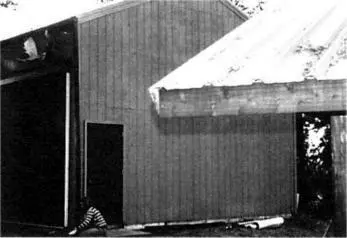
Those who plan ahead can put together a system to collect rainwater from roofs and gutters.
Collecting water from rooftops that would normally gush down a drainpipe into a storm sewer is also possible. Use plastic sheets and pipe to direct this water into your holding tanks. No precipitation in a city is particularly sanitary. Catching from rooftops that people may walk on and that may also catch dirt and debris is especially unsanitary. Clean collected precipitation similarly to the way you would treat water from ponds, swamps, rivers, and lakes by using a sand filter rack and bleach.
Except in some particularly sodden parts of the world, rain falls infrequently. Bountiful quantities must be stored when it arrives from the heavens. Plastic barrels weighing about 450 pounds when full are ideal. Do most readers realize how absolutely awful water stored over the long term can become? Thank God few people have to drink out of cisterns these days.
There's a lot of work to be done here. Try to filter and purify precipitation stored in the blue plastic barrels as soon as possible. Let's not even talk about water stored 3 or 4 weeks in hot climates that hasn't already been filtered and chlorinated.
Читать дальшеИнтервал:
Закладка:
Похожие книги на «Ragnar's Urban Survival: A Hard-Times Guide to Staying Alive in the City»
Представляем Вашему вниманию похожие книги на «Ragnar's Urban Survival: A Hard-Times Guide to Staying Alive in the City» списком для выбора. Мы отобрали схожую по названию и смыслу литературу в надежде предоставить читателям больше вариантов отыскать новые, интересные, ещё непрочитанные произведения.
Обсуждение, отзывы о книге «Ragnar's Urban Survival: A Hard-Times Guide to Staying Alive in the City» и просто собственные мнения читателей. Оставьте ваши комментарии, напишите, что Вы думаете о произведении, его смысле или главных героях. Укажите что конкретно понравилось, а что нет, и почему Вы так считаете.


